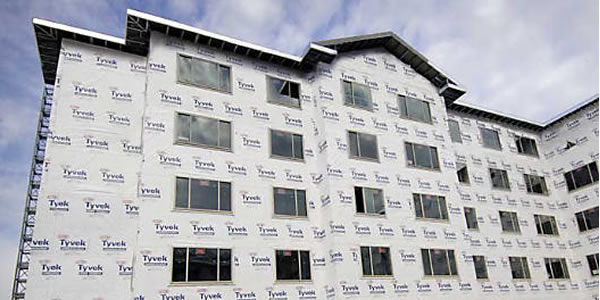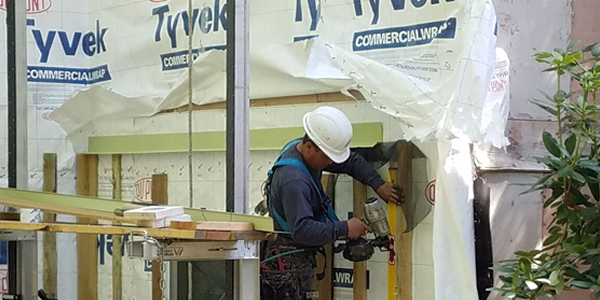Water Resistive Barriers (WRB)
Weather-Resistive Barriers provide a key function in a building's exterior wall system.
This is due to its capacity to control moisture and air flow, as well as improving energy efficiency.
There are two predominant weather-resistive barrier technologies:
- Asphalt Saturated Kraft Building Paper (Grade "D" Building Paper)
- Polymeric (or Plastic)


Functions of a Weather-Resistive Barrier
- Forms the vertical surface behind the exterior wall cladding (stucco, brick, siding etc.) that allows water to safely drain out of the wall system.
- Enables wet wall components to dry safely, because of its ability to allow moisture to pass through the barrier material.
- Protects the wall from water that makes its way through the exterior cladding, thereby acting as a barricade. This helps prevent water from damaging the interior wall system components, such as insulation and framing.
- Reduces air infiltration resulting in an energy efficient structure.
Types of Weather-Resistive Barriers
Asphalt Saturated Kraft - The Jumbo Tex® product line produced by Fortifiber is widely used by builders and architects to protect homes and commercial buildings from the problems caused by water intrusion and excessive moisture. It provides an effective weather-resistive barrier behind stucco and brick – as well as wood, fiber cement and vinyl siding.
Polymeric – Tyvek® is the most recognizable product in this category. It is available in large rolls (sheets) and is used to protect buildings during and after construction. It provides an air barrier between the outer siding of a building and the building itself. Tyvek allows water vapor to pass through but liquid water and air cannot. It provides an excellent water protection barrier for the building.
Rain Screen WRB Systems
Rain Screen WRB systems are used with increasing frequency in current construction projects.
This construction provides an air gap between the building and its siding.
This air gap allows air circulation between the WRB barrier and the siding.
Components of a Rain Screen System
- A WBR product (eg, Tyvek®) installed against the building sheathing.
- Furring strips or battens are installed next.
- Exterior siding finishes the installation.
- Through wall flashings are added horizontally to ensure that any water entering the system is directed outward to the outer layer.
Let Us Be The Solution For Your Next Project
Get a no-obligation site assessment
